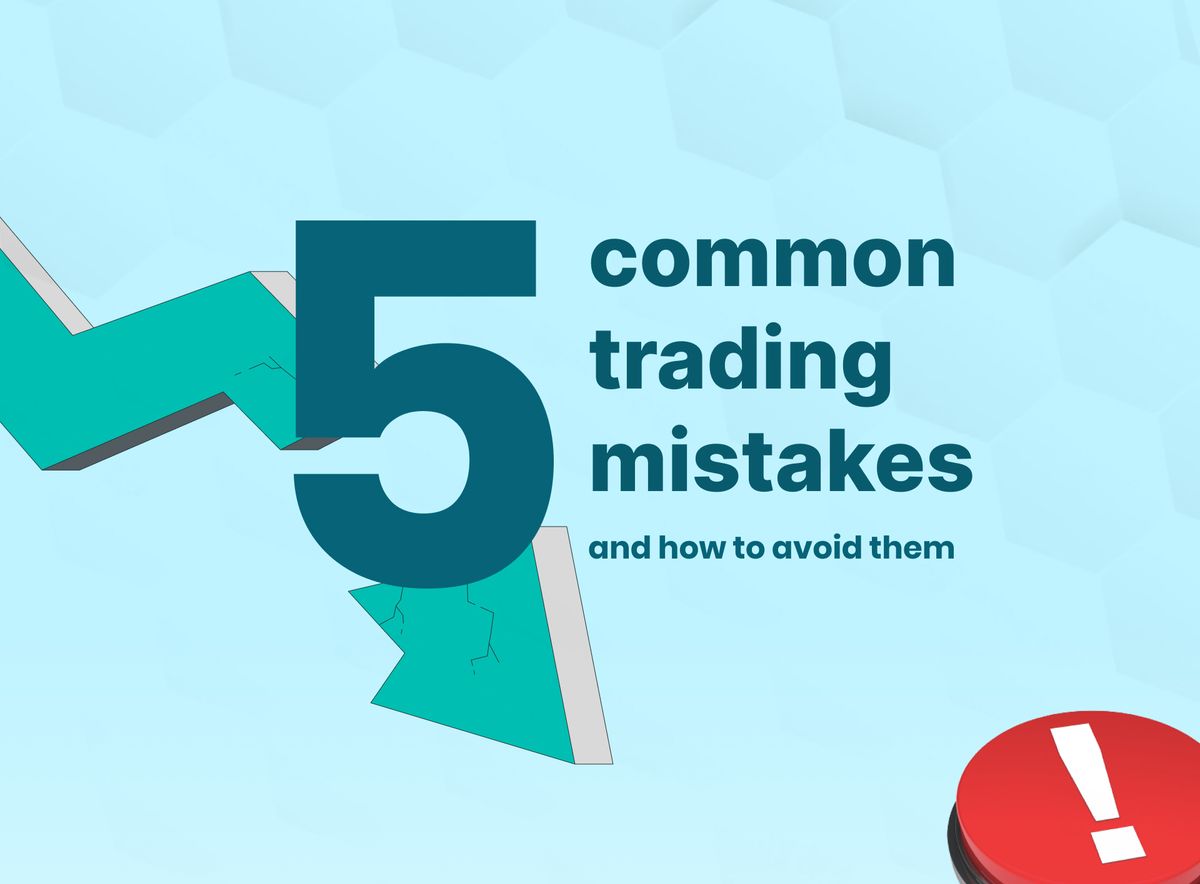Common mistakes in stock trading include emotional trading, lack of research, overtrading, ignoring risk management, and poor diversification. Avoid these by staying disciplined, informed, and using a well-thought-out strategy.
Stock trading can be rewarding but comes with risks. Many traders make mistakes that can be easily avoided with proper knowledge and strategy. Emotional trading often leads to poor decisions. Lack of research results in uninformed choices. Overtrading can drain capital quickly.
Ignoring risk management leaves investments vulnerable. Poor diversification increases the risk of significant losses. By understanding these common pitfalls and taking proactive steps, traders can enhance their success and minimize losses. This guide aims to shed light on these mistakes and provide actionable tips to avoid them, ensuring a more disciplined and strategic approach to stock trading.
Emotional Trading
Emotional trading is a common pitfall in stock trading. Many traders let their emotions dictate their decisions. This often leads to poor financial outcomes. Understanding how emotions like fear and greed affect trading is crucial.
Impact Of Fear And Greed
Fear can cause traders to sell stocks prematurely. This often happens during market downturns. Greed, on the other hand, can push traders to hold onto stocks too long. Both emotions can lead to significant losses.
| Emotion | Effect |
|---|---|
| Fear | Premature selling |
| Greed | Holding too long |
Traders need to recognize these emotions. Awareness is the first step to controlling them. Setting clear, rational trading goals can help mitigate their impact.
Staying Calm Under Pressure
Staying calm during market fluctuations is essential. A calm mind makes better decisions. Traders should develop strategies to manage stress. Breathing exercises and mindfulness can help maintain composure.
Another useful tactic is to create a trading plan. This plan should include entry and exit strategies. It should also define risk management rules. Following a plan reduces emotional decision-making.
- Practice breathing exercises
- Follow a clear trading plan
- Set rational goals
Regularly reviewing and adjusting your plan is also important. This ensures it remains effective. Remember, a calm trader is a successful trader.

Credit: shivendrabhatia.medium.com
Lack Of Research
One of the most common mistakes in stock trading is the lack of research. Many traders jump into the market without understanding the stocks they are buying. This can lead to poor investment decisions and significant losses. Thorough research is essential to make informed choices and minimize risks.
Importance Of Due Diligence
Due diligence means conducting thorough research before making any investment. It involves analyzing company financials, market trends, and industry conditions. This helps traders make informed decisions based on solid data.
Here are some key steps in due diligence:
- Review financial statements
- Understand the company’s business model
- Check the industry growth potential
- Analyze market trends
Reliable Information Sources
Using reliable sources is crucial in conducting research. Misinformation can lead to poor decisions and losses. Here are some trusted sources:
| Source | Type of Information |
|---|---|
| Company Reports | Financial statements and earnings reports |
| Financial News Websites | Market news and analysis |
| Stock Market Analysis Platforms | Stock performance and expert reviews |
| Regulatory Filings | SEC filings and disclosures |
Always cross-check information from multiple sources. This ensures you get a balanced view of the stock. Avoid relying on a single source to make decisions.
Ignoring Risk Management
Ignoring risk management is a common mistake in stock trading. It can lead to huge losses. Understanding risk management is crucial for every trader. This section will guide you through essential strategies to avoid this mistake.
Setting Stop-loss Orders
A stop-loss order helps limit potential losses. It automatically sells your stock at a set price. This ensures you don’t lose more than you can afford.
- Identify your risk tolerance.
- Set a stop-loss order at that level.
- Review and adjust your stop-loss regularly.
Setting stop-loss orders helps safeguard your investments. Make sure to use them wisely.
Diversifying Your Portfolio
Diversifying your portfolio spreads risk across different assets. This reduces the impact of a single loss. Investing in various sectors can provide balance.
| Asset Type | Risk Level |
|---|---|
| Stocks | High |
| Bonds | Low |
| Real Estate | Medium |
By diversifying, you protect against market swings. It’s a smart strategy for any trader.
Overtrading
Overtrading is a common mistake where traders excessively buy and sell stocks, often leading to significant losses. Avoid this by setting clear trading goals and sticking to a disciplined strategy.
Overtrading is a common mistake in stock trading. It happens when traders make too many trades in a short time. This can lead to losses. Overtrading often comes from excitement or fear. It can drain your account quickly. Knowing how to avoid overtrading is crucial for success.
Recognizing Market Trends
To avoid overtrading, recognize market trends. Follow these tips:
- Study historical data.
- Use technical analysis tools.
- Keep an eye on economic news.
By recognizing trends, you can make better trading decisions. This helps reduce the urge to trade too often.
Maintaining Trading Discipline
Maintaining trading discipline is key to avoiding overtrading. Follow a trading plan. Stick to it, no matter what. Here’s how:
- Set clear goals.
- Define your risk tolerance.
- Limit the number of trades per day.
Discipline keeps you focused. It prevents emotional trading. Always review your trades. Learn from your mistakes. This helps improve your strategy.
Chasing Hot Tips
Many new traders make the mistake of chasing hot tips. They hear about a stock from a friend or a news article. Without doing their own research, they jump in. This often leads to losses. It’s crucial to evaluate stock recommendations and develop a personal strategy.
Evaluating Stock Recommendations
Before acting on a tip, evaluate the source. Is it credible? Look for independent analysis. Check the company’s financial health and market position.
- Examine earnings reports.
- Read industry news.
- Compare with competitors.
Use a mix of fundamental and technical analysis. This gives a fuller picture of the stock’s potential.
Developing A Personal Strategy
Create your own trading plan. This helps avoid rash decisions. Focus on your financial goals and risk tolerance.
- Set clear investment goals.
- Determine your risk level.
- Decide on investment duration.
Stick to your plan. Avoid getting swayed by market noise. A solid strategy builds confidence and discipline.
Here’s a simple table to track your strategy:
| Goal | Risk Level | Duration | Action Plan |
|---|---|---|---|
| Retirement | Low | 20 years | Buy and hold |
| Wealth Building | Medium | 10 years | Growth stocks |
| Short-term Gains | High | 1 year | Trading |
By developing a personal strategy, you make informed decisions. This reduces the risk of chasing hot tips.

Credit: m.youtube.com
Not Having A Plan
One of the biggest mistakes in stock trading is not having a plan. A trading plan is essential for success. Without a plan, traders often act on emotions. This can lead to poor decisions and significant losses.
Creating A Trading Plan
Creating a trading plan involves several steps. First, set clear goals. Know your risk tolerance and financial objectives. Define your investment strategy. Will you be a day trader or a long-term investor? Next, outline your risk management rules. Decide on stop-loss limits to protect your capital.
Include a detailed analysis process. Use technical and fundamental analysis to choose stocks. Write down your criteria for entering and exiting trades. Consistency is key. Stick to your plan, even during market fluctuations.
| Step | Action |
|---|---|
| 1 | Set clear goals |
| 2 | Define investment strategy |
| 3 | Outline risk management rules |
| 4 | Detail analysis process |
| 5 | Stick to the plan |
Adapting To Market Changes
The market is always changing. Your plan should be flexible. Regularly review and adjust your strategy. This helps you stay aligned with market trends.
Use tools to monitor market changes. Stay informed about economic news and events. Adapt your plan to new information. This will help you make better trading decisions.
- Review your strategy regularly
- Stay informed about market trends
- Adjust your plan based on new information
Neglecting Technical Analysis
Many traders make the mistake of neglecting technical analysis. Technical analysis uses charts and indicators to predict price movements. Ignoring it can lead to bad decisions. Understanding and using technical analysis can improve your trading success.
Basics Of Chart Patterns
Chart patterns are visual representations of price movements. They help traders understand market trends. The most common chart patterns include:
- Head and Shoulders: Indicates a market reversal.
- Double Top and Bottom: Suggests a trend change.
- Triangles: Shows periods of consolidation before a breakout.
Recognizing these patterns can help you make better trading decisions. Study charts regularly to spot these patterns.
Using Indicators Effectively
Indicators provide additional information about price trends. They help confirm chart patterns. Key indicators include:
| Indicator | Description |
|---|---|
| Moving Averages | Smooth out price data to identify trends. |
| Relative Strength Index (RSI) | Measures the speed and change of price movements. |
| MACD | Shows the relationship between two moving averages. |
Use these indicators to confirm your analysis. Combining multiple indicators can give a clearer picture.
Neglecting technical analysis can lead to poor trading outcomes. Learn to read charts and use indicators. This will enhance your trading strategy.

Credit: www.ezalgo.ai
Failure To Learn From Mistakes
One of the biggest pitfalls in stock trading is the failure to learn from mistakes. Traders often repeat their errors, leading to significant financial losses. Understanding your mistakes and actively working to correct them is crucial for long-term success in stock trading.
Keeping A Trading Journal
A trading journal is an invaluable tool. It helps track your trades and analyze patterns. By documenting each trade, you can see what works and what doesn’t. Include details like:
- Entry and exit points
- Reasons for the trade
- Market conditions
- Outcome of the trade
Review your journal regularly. Identify recurring mistakes and adjust your strategies accordingly. This practice ensures continuous improvement and helps avoid repeating the same errors.
Continuous Education
Stock trading requires ongoing learning. Markets evolve, and so should your knowledge. Engage in continuous education by:
- Reading books and articles on stock trading
- Attending webinars and seminars
- Following market news and trends
- Participating in online courses
Join forums and communities to discuss strategies with other traders. Stay updated with the latest tools and technologies. Never stop learning, as it keeps you ahead in the trading game.
Frequently Asked Questions
What Are The Most Common Stock Trading Mistakes?
Common stock trading mistakes include emotional trading, poor research, overtrading, ignoring risk management, and failing to diversify investments.
What Is The Biggest Mistake Stock Traders Make?
The biggest mistake stock traders make is letting emotions drive their decisions. Emotional trading often leads to significant losses.
What Is The Number One Mistake Traders Make?
The number one mistake traders make is letting emotions drive their decisions. This often leads to poor choices.
What’s The Hardest Mistake To Avoid While Trading?
Emotional decision-making is the hardest mistake to avoid while trading. Stick to your strategy and avoid impulsive trades.
Conclusion
Avoiding common mistakes can significantly improve your stock trading success. Stay informed, plan, and manage your risk wisely. By learning from these pitfalls, you can build a more profitable and sustainable trading strategy. Remember, patience and discipline are key to long-term success in the stock market.

Olga L. Weaver is a distinguished figure in both the realms of real estate and business, embodying a unique blend of expertise in these interconnected domains. With a comprehensive background in real estate development and a strategic understanding of business operations, Olga L. Weaver has positioned herself as a trusted advisor in the complex intersection of property and commerce. Her career is marked by successful ventures in real estate, coupled with a keen ability to integrate sound business principles into property investments. Whether navigating the intricacies of commercial transactions, optimizing property portfolios, or providing strategic insights into market trends, Olga L. Weaver’s expertise encompasses a wide spectrum of both real estate and business-related topics. As a dual expert in real estate and business, she stands as a guiding force, empowering individuals and organizations with the knowledge and strategies needed to thrive in these intertwined landscapes. Olga L. Weaver’s contributions continue to shape the dialogue around the synergy between real estate and business, making her a respected authority in both fields.


